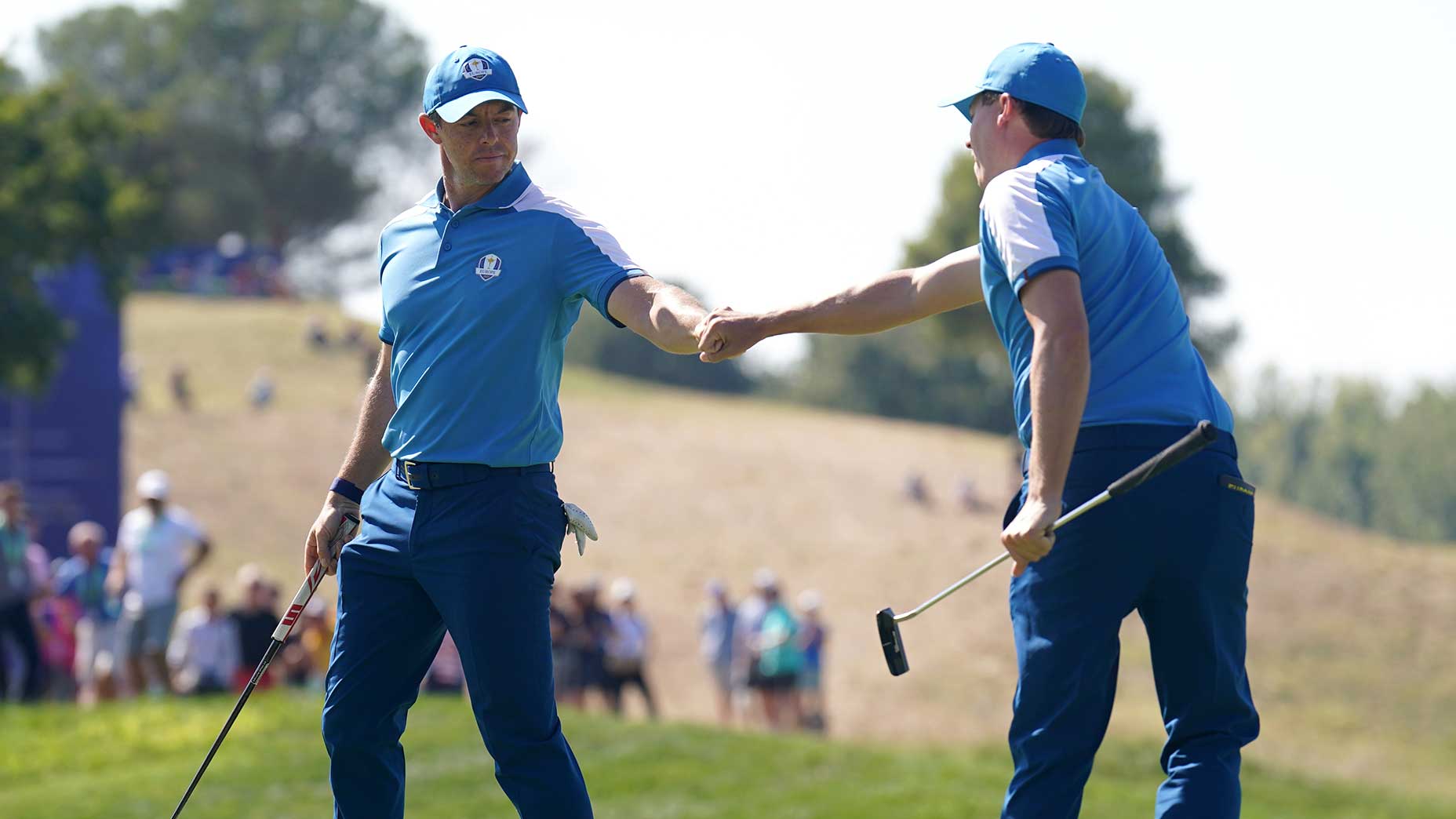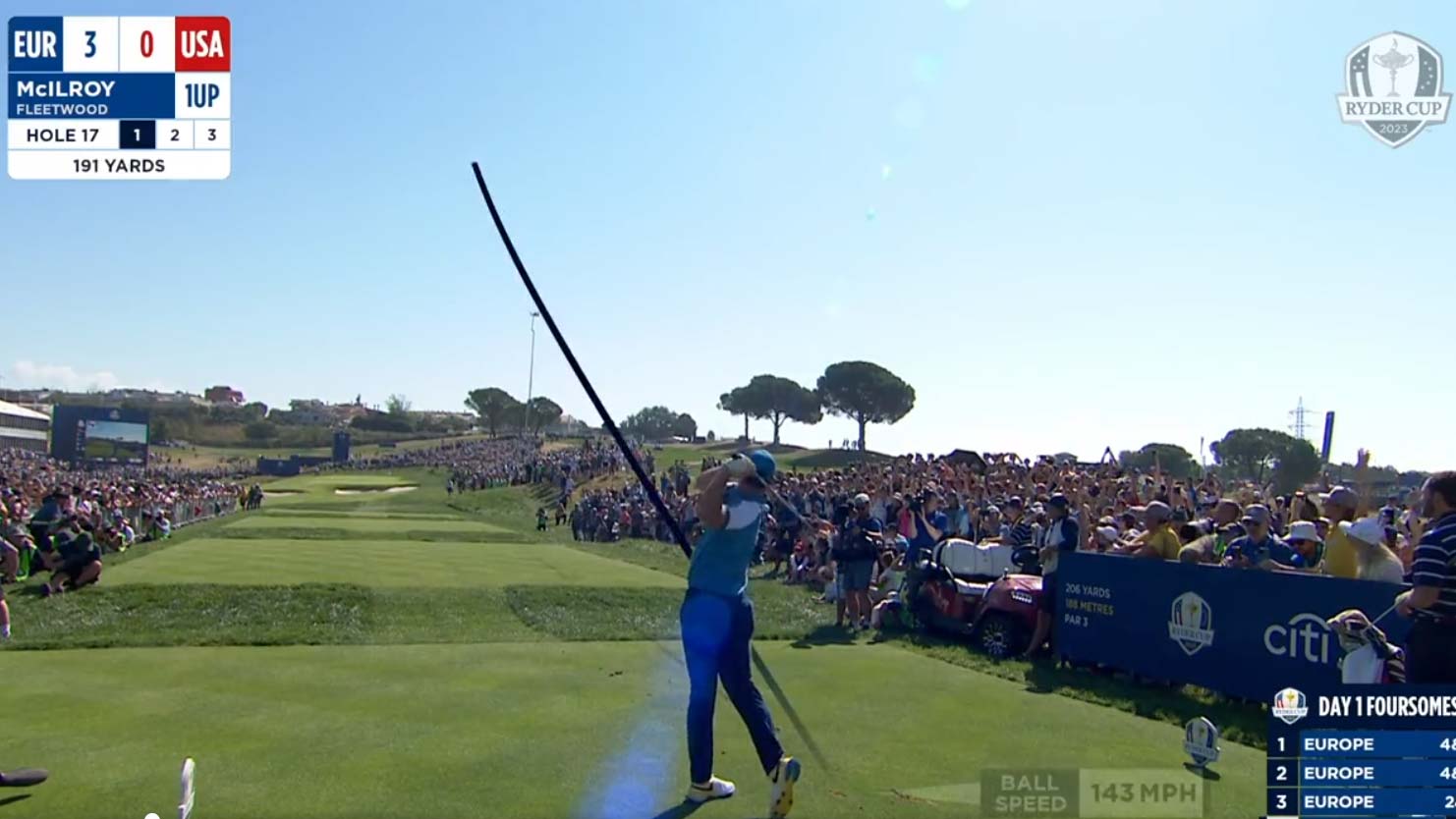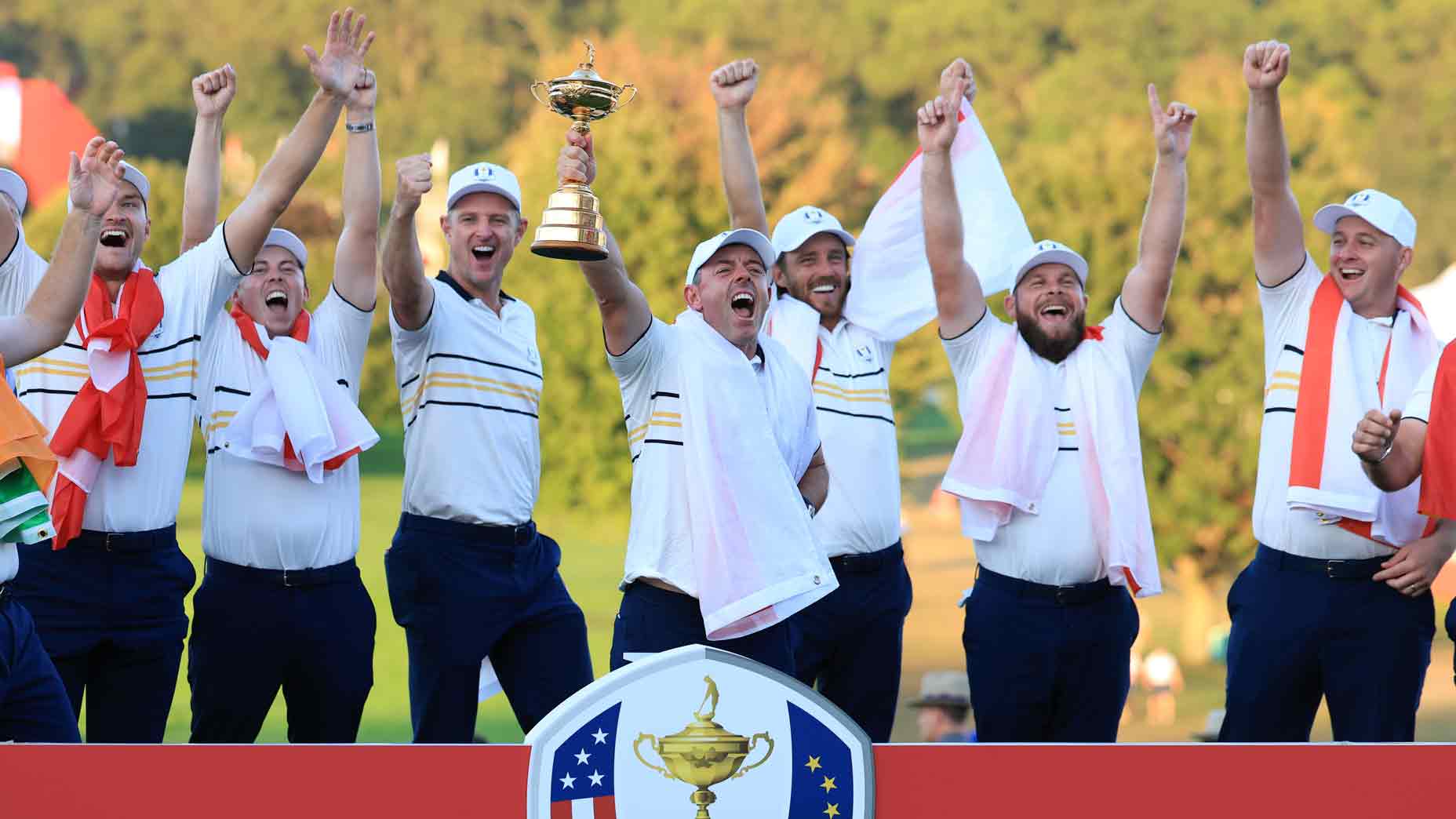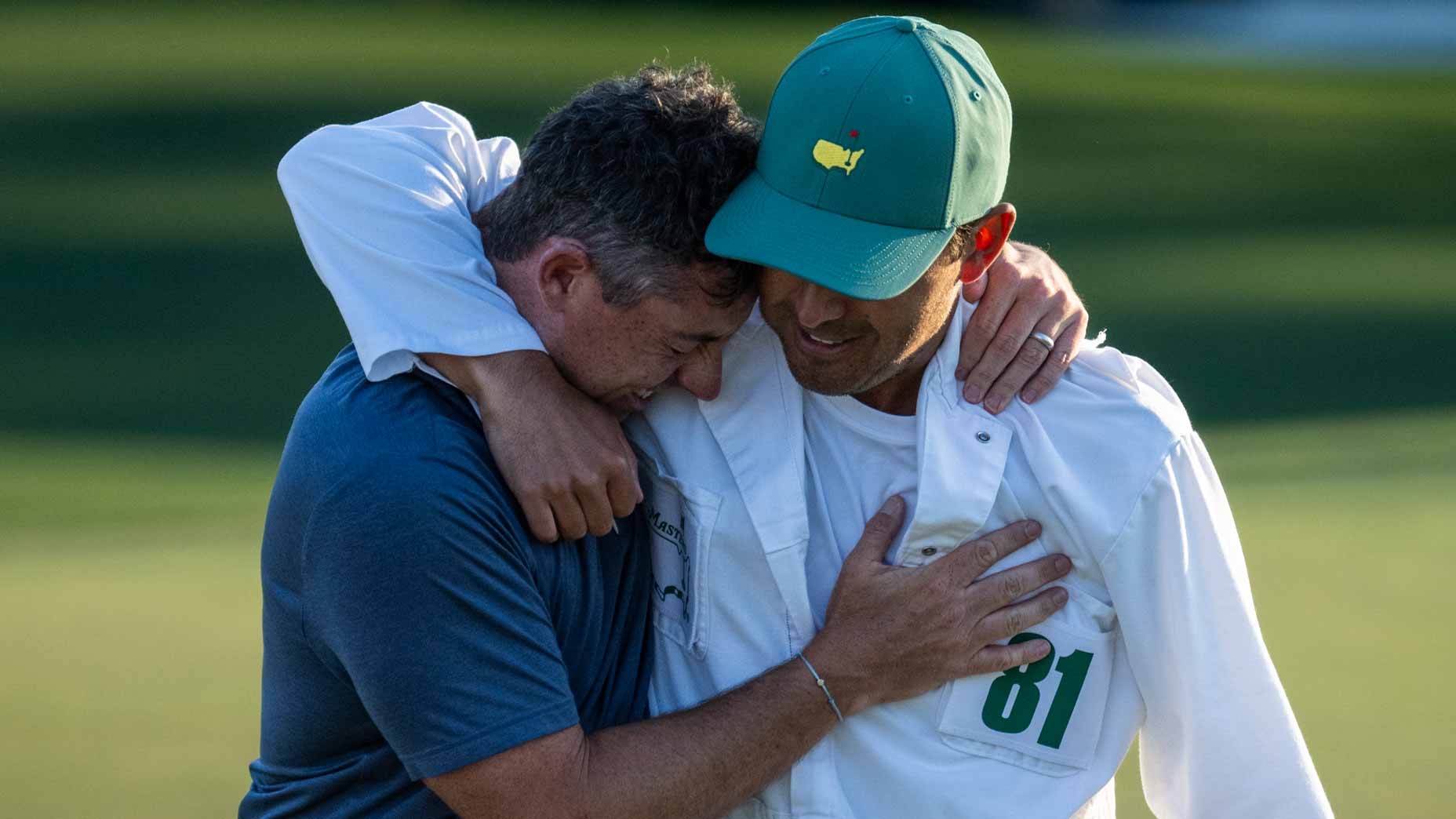The Ryder Cup was already off to a horrendous start for the Americans, who trailed 4-0 after the opening session. And to make matters worse, Matt Fitzpatrick, who had never won a point in a Ryder Cup, was now on fire.
Fitzpatrick teamed with Rory McIlroy in afternoon four-ball on Friday at Marco Simone Golf and Country Club outside of Rome, and the 2022 U.S. Open champion couldn’t miss.
Fitzpatrick made four birdies and an eagle in a five-hole stretch on the front nine as Fitzpatrick and McIlroy took a commanding 5-up lead after six holes over Collin Morikawa and Xander Schauffele, and the European duo even displayed some clever gamesmanship on the 6th.
All four players had birdie putts on the short par-4. With a putt of 24 feet, 8 inches, McIlroy was out. Morikawa had 16 feet, 7 inches for birdie, and Schauffele (5 feet, 5 inches) and Fitzpatrick (4 feet, 7 inches) were tucked in close.
McIlroy, with the longest putt, had the right to play first, but it was actually Fitzpatrick who stepped up and putted instead. He rolled in his birdie try, and McIlroy, without needing to putt anymore, picked up his ball.
The person farthest away from the hole putting first is something you learn in junior golf. So, why didn’t McIlroy putt first?
Rory McIlroy said this clutch Ryder Cup shot was among his all-time bestBy: Kevin Cunningham
“The ball away in match play controls, so you can have your partner go first,” said analyst Brad Faxon on the broadcast, explaining Rule 23.6. “That’s what they did and that’s a good strategy.”
Here’s why it was beneficial. McIlroy didn’t have a good chance of making his long putt, and the next two putts would have been by the Americans. One of them, Schauffele’s, was inside six feet, meaning he had a good chance of making his and putting the pressure on Fitzpatrick to halve the hole. But by having Fitzpatrick go first from even closer than Schauffele’s ball, he made his high-percentage putt and suddenly putt all the pressure on Morikawa, and especially Schauffele. Instead of putting to take control of the hole, the Americans needed to make it simply to tie.
After Morikawa missed, Schauffele did, too.
“What that did is it forced the Americans, instead of putting with the chance of a possible miss by Fitzpatrick, they are now putting solely to tie,” said one member of the broadcast team. “The mental gamesmanship between the two sides is very evident there.”
Added analyst Paul Azinger: “Excellent strategic move there, right by the book by Rory and Matty Fitzpatrick.”
McIlroy and Fitzpatrick took a 5-up lead on the sixth hole. You can follow all of the afternoon action here.











